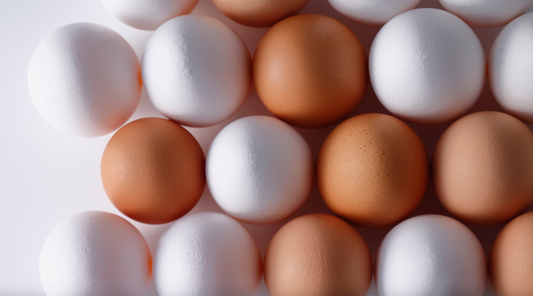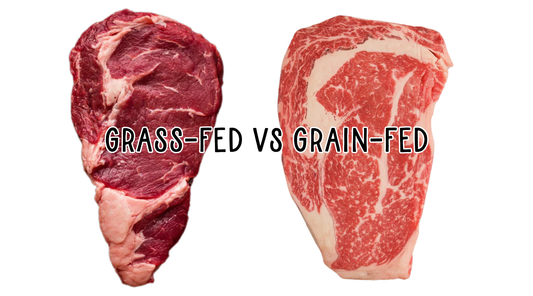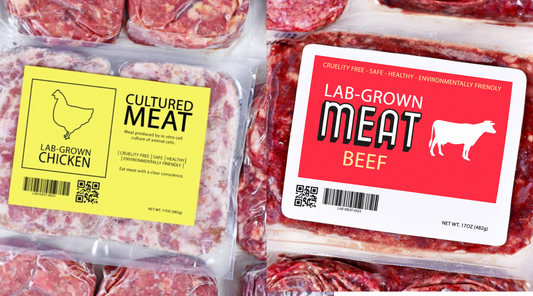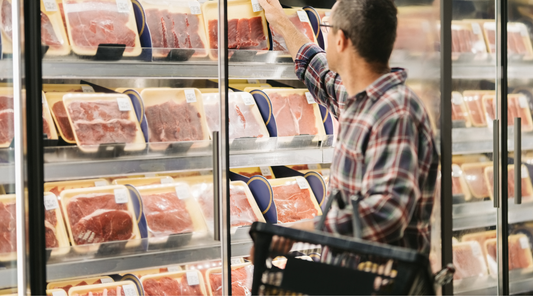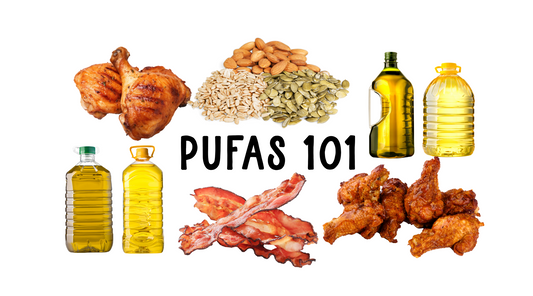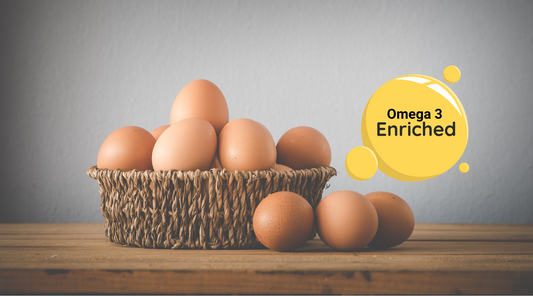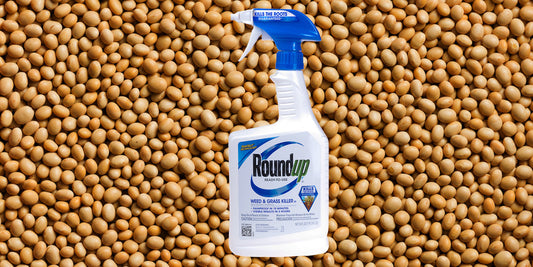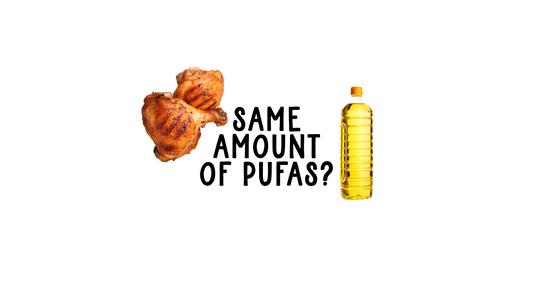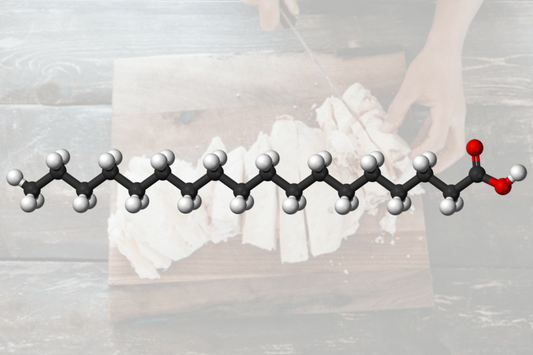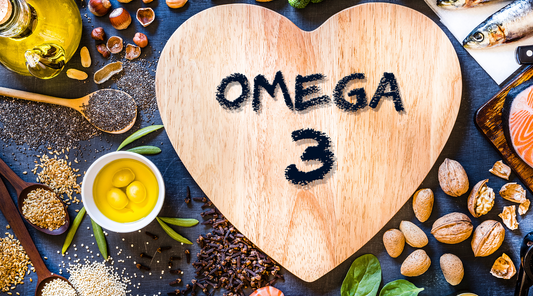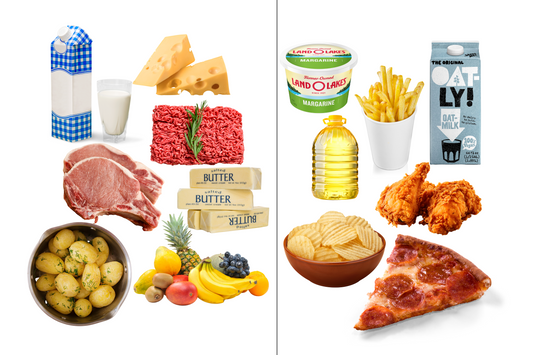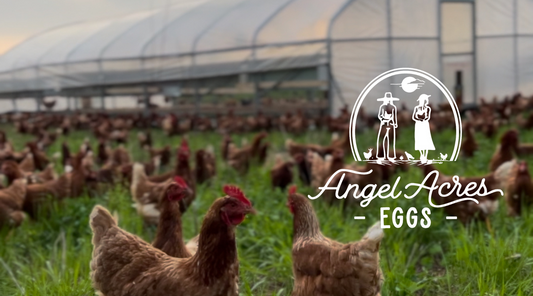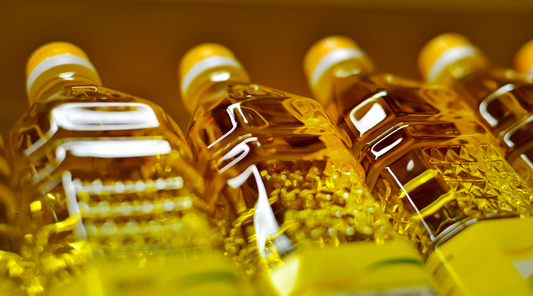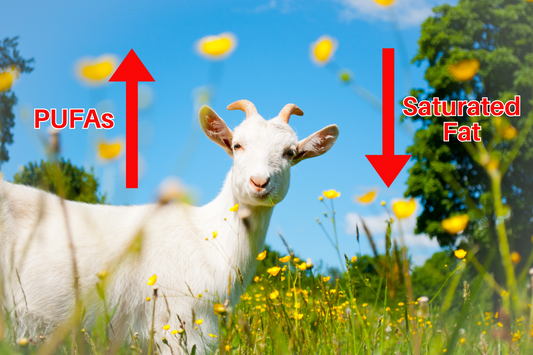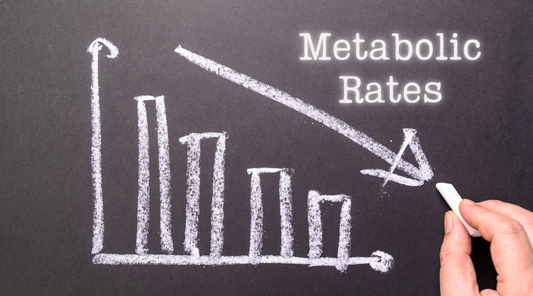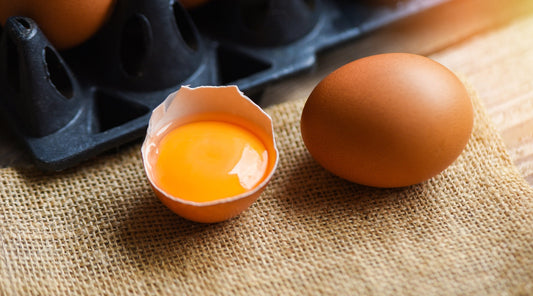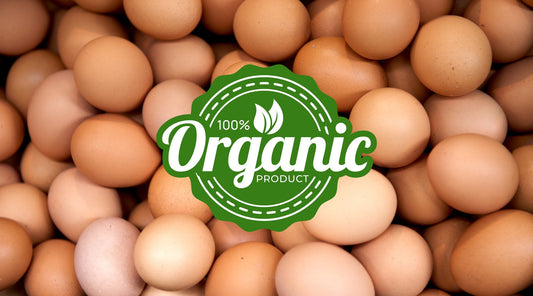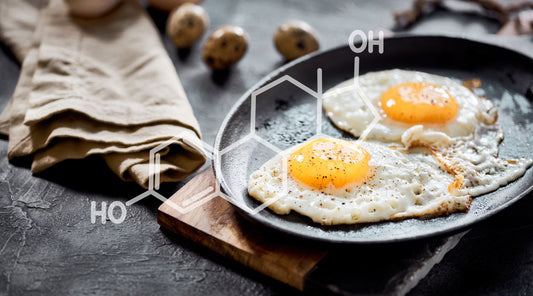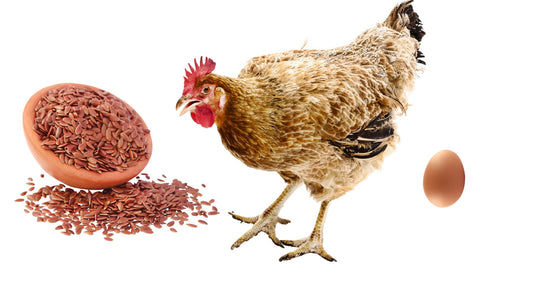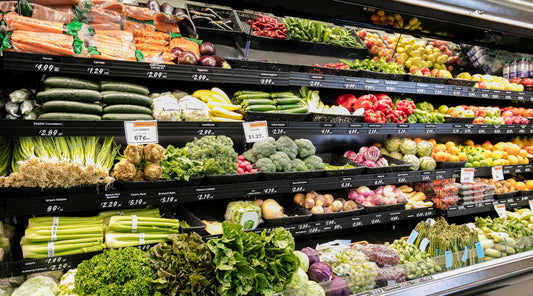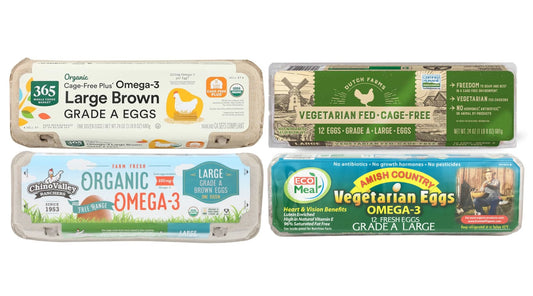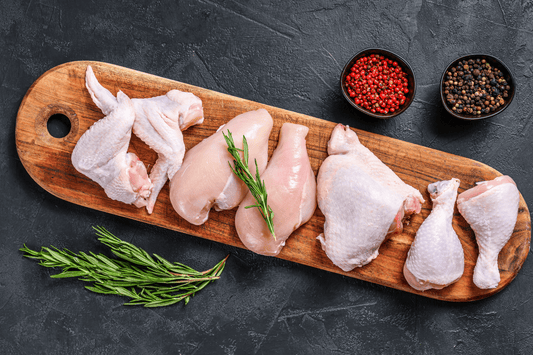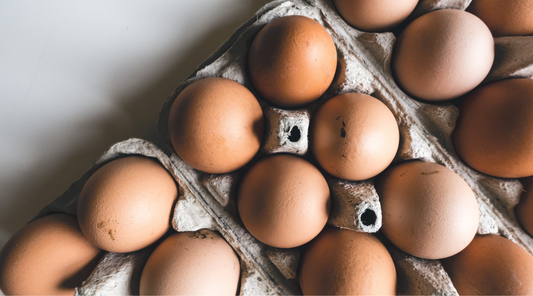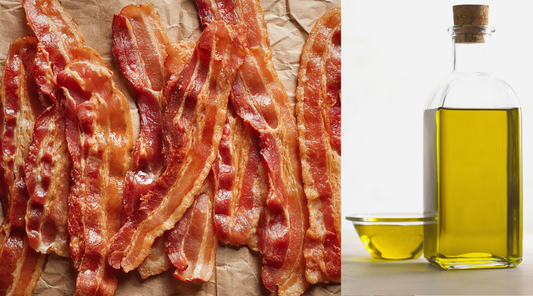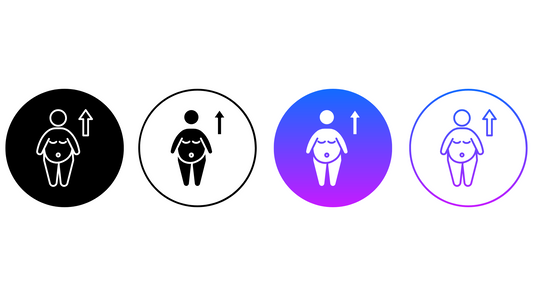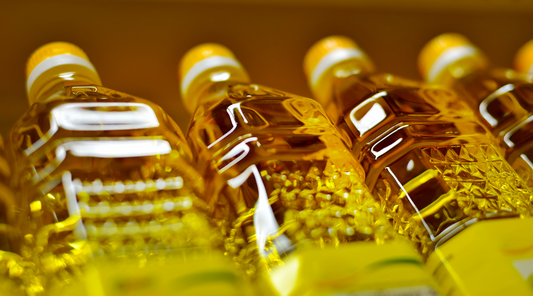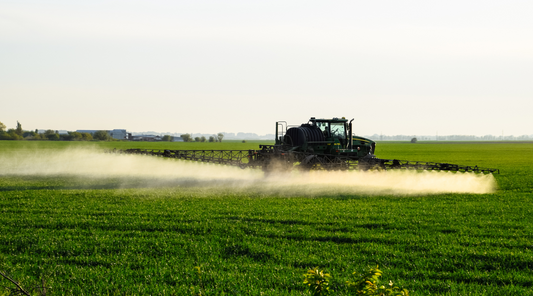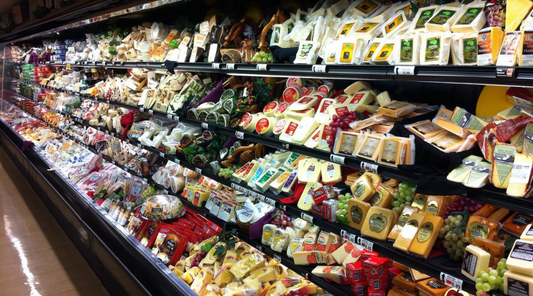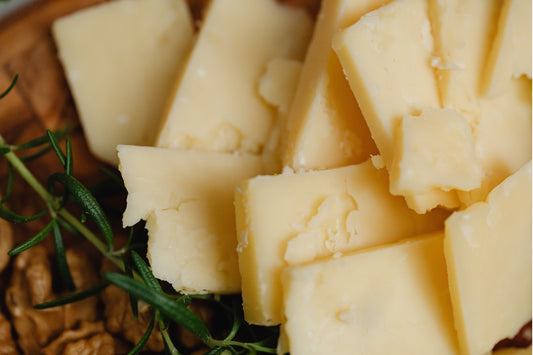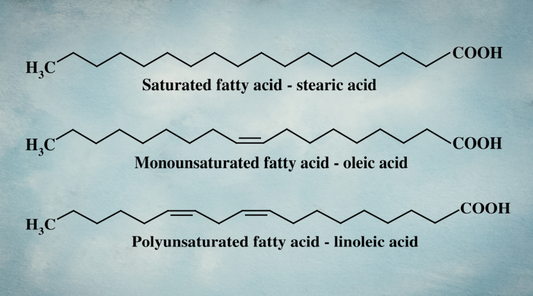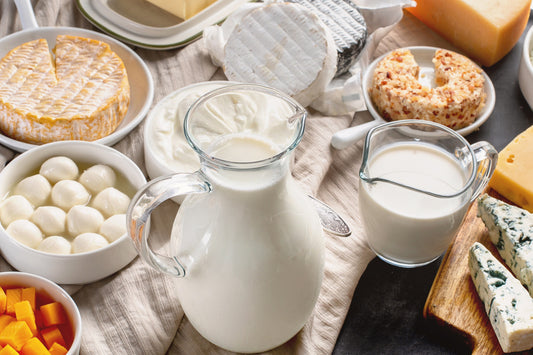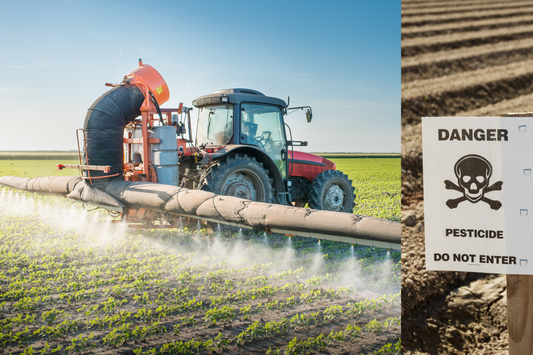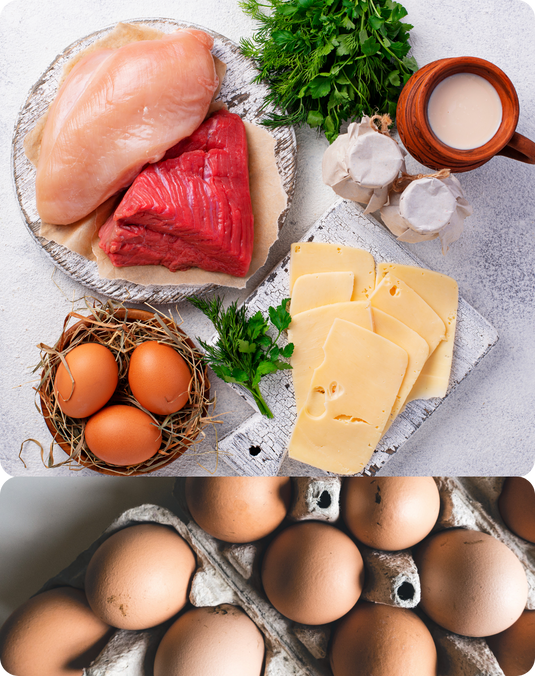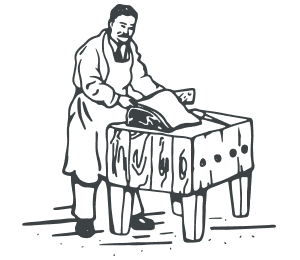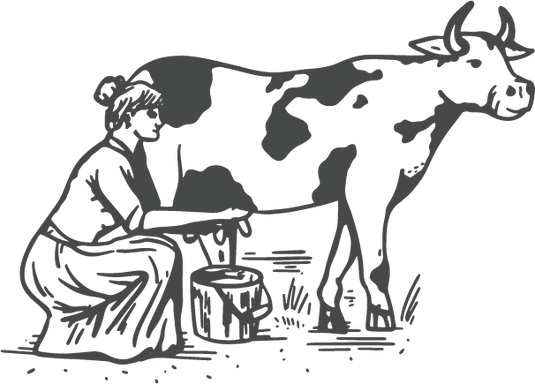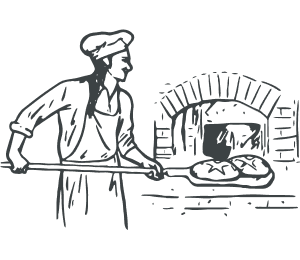
The Missing Piece in Modern Diets: Why We Need to Eat Nose-to-Tail Again
In today’s health-conscious world, lean protein has become a cornerstone of many diets. Fitness enthusiasts, wellness advocates, and everyday consumers alike often prioritize protein intake, typically focusing on lean muscle meats (such as steaks, chicken breasts, ground turkey, and deli meats) or opting for whey protein powder shakes.
But what if this narrow approach to animal protein is missing a crucial component of our ancestral diet?
What if the parts we've been discarding hold the key to better health?
The Missing Piece: Collagen and Gelatin
If you examine most standard modern diets, you'll notice they're typically high in muscle meat (think beef tenderloins, strip steaks, ground turkey, deli meats, and boneless, skinless chicken breasts). These cuts dominate our plates, grocery carts, and restaurant menus.
However, it’s important to keep in mind that this represents a significant departure from traditional eating patterns that once utilized the entire animal.
Collagen and gelatin are the missing pieces in our contemporary diets. These proteins, derived from the connective tissues of animals have a unique anti-inflammatory amino acid profile[i], primarily consisting of glycine, glutamic acid, proline, and alanine. Far from being nutritionally insignificant, collagen is actually the most abundant protein in the human body, accounting for approximately 30% of our total protein mass. It's predominantly found in connective tissues like skin, joints, bones, and teeth, providing structure, strength, and stability throughout our bodies.
Research has consistently shown that regular consumption of collagen-rich foods improves skin elasticity, joint function, gut health, and bone density[ii][iii][iv][v]. These benefits aren't merely cosmetic, they represent fundamental aspects of health that affect quality of life, mobility, and longevity!
The Amino Acid Balance: Why It Matters
The importance of collagen goes beyond its direct benefits. It also plays a crucial role in balancing our overall amino acid intake for optimal energy production.
Modern diets heavy in muscle meats and eggs provide high levels of certain amino acids, particularly cysteine, methionine, and tryptophan. While these amino acids are essential, consuming them in disproportionately high amounts relative to other amino acids can potentially increase inflammation and suppress thyroid function.[vi]
This imbalance represents a significant departure from our evolutionary dietary pattern. Our ancestors consumed animals in their entirety, not just the premium muscle cuts, but also the organs, bones, skin, and connective tissues. This naturally provided a balanced amino acid profile that help support our metabolism and overall health.
Some plant-based advocates point to research showing that methionine restriction (limiting this amino acid found abundantly in muscle meat) increases lifespan and improves metabolic health in various study models.[vii] This observation has led some to question whether we should reduce our consumption of methionine-rich muscle meats entirely.
However, this is a false dichotomy. Muscle meat provides valuable complete protein, essential minerals, B vitamins, and fat-soluble vitamins that are crucial for health. The solution isn't to eliminate these nutritious foods but rather to balance them with glycine-rich collagen sources, precisely what our ancestors intuitively did through nose-to-tail eating practices!
Research shows that when methionine from muscle meat is balanced with glycine from collagen, it mimics the beneficial effects of methionine restriction on longevity[viii][ix]. This balance enables us to reap the nutritional rewards of muscle meat while offsetting any potential downsides with complementary amino acids.
The key takeaway here is that we need to consume amino acids in balance -- after all, too much of anything isn’t good for us.
The Shift Away from Traditional Eating
How did we arrive at our current imbalanced approach to animal protein? The dramatic shift toward eating primarily muscle meats began in the mid-20th century, driven by several interconnected factors:
1. Industrialization of Meat Production
The rise of large-scale meatpacking and processing facilities fundamentally changed how animals were butchered and sold. We witnessed a profound transformation from small-scale local butchery (where skilled artisans knew each cut and practiced comprehensive utilization), to massive industrial operations processing thousands of animals daily.
In the traditional butcher shop model, the relationship between butcher and customer was personal. Butchers knew their community's preferences and cooking traditions, often providing guidance on how to prepare lesser-known cuts. They practiced whole-animal butchery out of economic necessity and cultural tradition, ensuring nothing went to waste. Customers purchased a diverse range of cuts, from prime steaks to organ meats, bones, and fat for rendering. This direct relationship fostered appreciation for the entire animal and maintained the transfer of culinary knowledge between generations.
The industrialization of meat processing severed this connection. Assembly-line efficiency became paramount, with specialized workers performing single repetitive tasks rather than comprehensively breaking down animals. This approach prioritized standardization and speed over craftsmanship and variety. And the economic incentives shifted dramatically -- industrial processors found it more profitable to streamline production around a limited selection of uniform cuts that could be marketed widely.
These operations developed mechanical separation techniques to extract maximum value from carcasses, often repurposing less marketable parts into anonymous ground products, processed foods, or non-food applications. Premium muscle cuts were packaged for retail, while many collagen-rich parts were diverted to rendering plants for industrial uses or pet food production, effectively removing them from the human food supply.
The industrial model prioritized quick-cooking, uniform products over the varied textures and preparation methods required for collagen-rich cuts. This standardization extended to the animals themselves, with breeding programs selecting for traits that maximized muscle development and minimized variation, further distancing meat production from its diverse traditional forms.
2. Dietary Guidelines and the Rise of Fat Phobia
Starting in the 1950s, mainstream nutrition advice took a sharp turn, demonizing saturated fat and cholesterol, fueling what became a widespread ‘fat phobia’ culture. This shift led to dietary recommendations that prioritized lean muscle meats like boneless, skinless chicken breasts, over roasts, ‘odd cuts’, and organ meats. The focus was on avoiding fat, particularly saturated fat, which was mistakenly believed to contribute to heart disease and other health issues.
As a result, the collagen-rich parts of animals, which can contain a little bit more fat, were labeled as “unhealthy” and pushed out of mainstream diets. This was a significant departure from traditional eating habits, where whole animals were prized for their nutritional value.
Over time, the idea that animal fats were inherently harmful has been fiercely contested by new research. Plus, the historical usage of animal fats and the centuries-old tradition of using saturated-fat-rich dairy paints a very different picture. In fact, many cultures have thrived despite incorporating some animal fats in their diet for generations. Yet, the modern narrative of “fat is bad” persists, despite mounting evidence that not all fats are created equal and that many traditional fat-rich foods are not only safe but beneficial for our health.
3. Convenience Culture
After World War II, the rise of busy households shifted the focus of food preparation to convenience. Quick-cooking boneless cuts like chicken breasts, tenderloin steaks, and ground meats became the go-to options, fitting perfectly into the fast-paced lifestyle. These cuts, which required little effort to cook, were seen as ideal for busy modern lives.
Meanwhile, tougher, collagen-rich cuts like shanks, oxtails, and briskets, which required slow cooking to break down their connective tissues and release their rich nutrients, were deemed impractical. These cuts, once prized for their deep flavor and nutritional value, were increasingly viewed as time-consuming and outdated.
However, our ancestors regularly used slow cooking out of necessity, as well as for its nutritional benefits. Long cooking times allowed collagen, gelatin, and minerals from bones and connective tissue to enrich broths, stews, and soups. These practices provided essential nutrients for joint health, skin elasticity, and overall well-being-- benefits that modern diets often lack. Over time, as convenience culture grew, the focus shifted from these nutrient-dense cuts to faster, more convenient options, leading to a loss of traditional cooking methods and the valuable nutrition they provided.
4. Loss of Traditional Food Knowledge
Perhaps most critically, we experienced a profound intergenerational disconnection from traditional food knowledge. As home butchering declined and fewer people learned traditional cooking techniques from their elders, the skills needed to prepare collagen-rich cuts and organ meats faded from common knowledge. What was once essential culinary wisdom became specialized knowledge preserved only by dedicated chefs and food historians.
5. Marketing and Consumer Perception
Food companies and restaurants heavily marketed premium muscle cuts like ribeye, filet mignon, and chicken breast as the most desirable parts of the animal. This reinforced the idea that these were the "best" choices, while other parts were inferior or even undesirable. This perception became self-reinforcing as consumers began to expect and demand these familiar cuts.
The cumulative result is a food system where valuable, nutrient-dense and collagen-rich parts of animals like bones, skin, connective tissue rich, and organ meats are often discarded or repurposed into pet food. Meanwhile, consumers primarily eat lean muscle meats, missing out on the balanced nutrition their ancestors naturally received.
The Practical Case for Nose-to-Tail Eating
Beyond the health benefits, eating a wider variety of animal parts makes practical sense from both sustainability and economic perspectives.
Consider this -- there are only 8-10 pounds of beef tenderloin in an entire cow. If someone were to eat 8 ounces of tenderloin daily, they would require approximately 35 cows per year to sustain this habit! This is clearly impractical and unsustainable on a large scale.
By incorporating a wider variety of cuts into our diets (where we still enjoy muscle meat but also regularly consume more connective tissue-rich cuts like shanks, oxtails, and roasts) we can make more efficient use of each animal raised for food. These cuts typically require low and slow cooking methods to break down the collagen fibers, resulting in tender, flavorful meals that also provide superior nutritional balance.
Plus, if we were to follow a more nose-to-tail approach like our ancestors, our protein intake would naturally achieve balance since the whole animal consists of muscle meat, bones (traditionally used to make nutrient-dense broths, soups, and stews), organs, odd cuts, and connective tissue-rich meat. This approach honors the life of the animal by ensuring nothing goes to waste, an ethical consideration that resonates with many contemporary consumers concerned about responsible food choices.
Reconnecting with Traditional Wisdom
The loss of traditional food knowledge represents more than just a nutritional deficit, it's a cultural loss as well. Throughout human history, communities developed sophisticated culinary traditions that utilized every part of animals harvested for food. These practices weren't merely about survival; they represented accumulated wisdom about nutrition, flavor, and respect for food sources.
Many traditional cuisines still preserve elements of this nose-to-tail approach:
-
In Italian cuisine, osso buco (braised veal shanks) celebrates the collagen-rich connective tissue and bone marrow.
-
Korean seolleongtang (ox bone soup) extracts nutrients from beef bones through long simmering.
-
Mexican menudo uses beef tripe (stomach) in a rich, spicy stew.
-
French cuisine elevates pâté and terrines made from organ meats to gourmet status.
-
Traditional Chinese cooking incorporates chicken feet, pork ears, and other collagen-rich parts.
By reconnecting with these traditions, we can rediscover not just healthier eating patterns but also deeper cultural connections to our food. This reconnection offers an opportunity to develop a more mindful relationship with animal foods, one that acknowledges the sacrifice of the animal by using every part with intention and appreciation.
Practical Steps Toward Balance
Incorporating more collagen-rich foods into your diet doesn't require radical changes. Here are some practical approaches:
- Bone Broth: Perhaps the simplest entry point to collagen-rich eating, homemade bone broth uses bones and connective tissues to create a nutrient-dense liquid that can be sipped alone or used as a base for soups and stews. Alternatively, finding a pre-made bone broth source that you trust to ensure you regularly consume this collagen-rich superfood!
- Slow-Cooked Cuts: Try cuts like beef shanks, chuck roasts, pork shoulder, or chicken wings. These contain significant amounts of connective tissue that break down during slow cooking, releasing collagen.
- Organ Meats: Start with milder options like heart (which is technically a muscle but often grouped with organs) before exploring liver, kidney, or other organs. Organ meats don’t need to be an everyday thing due to the nutrient density. But incorporating organs a few times a month in a way that makes sense for your lifestyle and preferences is a great way to get a nutrient-boost and help utilize the whole animal!
- Whole Animals: When possible, purchase whole chickens rather than boneless breasts. Learn to break them down yourself or ask your butcher to do it while you keep all parts.
- Support Local Farmers: Many small-scale livestock producers struggle to sell the full range of cuts. By purchasing these "less desirable" parts, you support sustainable farming practices, help the farmer move more product, and reap the nutritional benefits.
When placing your next meat order, consider maintaining your favorite muscle cuts while adding ground meat (which often contains more connective tissue), bones for broth, and some collagen-rich cuts like shanks or roasts. This approach not only boosts your collagen intake but also expands your culinary skills and supports more efficient use of animal resources.
A Balanced Perspective
Embracing a nose-to-tail approach doesn’t mean abandoning muscle meats -- it’s about balance, not exclusion. Muscle cuts provide valuable protein, B vitamins, and essential minerals, but complementing them with collagen-rich cuts and organ meats offers a more complete nutritional profile.
This way of eating reflects how humans evolved, utilizing the whole animal rather than favoring select parts. Traditional cultures intuitively crafted diets that provided balanced nutrition long before modern science confirmed their benefits.
And this movement back toward nose-to-tail, traditional eating isn’t just a trend, it’s a return to ancestral wisdom increasingly validated by nutritional research. By incorporating more collagen-rich cuts and organ meats, we naturally balance our amino acid intake, supporting overall health in a way our ancestors instinctively understood.
Beyond personal health, this approach has ethical and environmental advantages. Using the whole animal reduces waste, honors the life taken for food, and supports sustainable farming. It also reconnects us with traditional knowledge that valued every part of an animal, rather than discarding some of its most nutrient-dense components.
As we seek better health, perhaps the greatest insights come from looking back. Many of the solutions to modern dietary imbalances lie in the foods and practices we’ve largely abandoned. By bringing these forgotten foods back to our tables, we not only nourish our bodies but also strengthen our connection to the food traditions that sustained generations before us.
So next time you’re buying meat, go beyond the usual steaks and chicken breasts. Your body and generations of ancestors might all thank you for remembering this forgotten wisdom!
My favorite collagen-rich cuts of meat:
-
Shanks
-
Roasts
-
Brisket
-
Skirt and Flank Steaks
-
Chicken Wings
-
Chicken Drumsticks
Our pre-made bone broth also makes it convenient to easily fit collagen into your daily routine!
[i] https://pubmed.ncbi.nlm.nih.gov/30944692/
[ii] https://pubmed.ncbi.nlm.nih.gov/28174772/
[iii] https://pubmed.ncbi.nlm.nih.gov/30368550/
[iv] https://pubmed.ncbi.nlm.nih.gov/23949208/
[v] https://pmc.ncbi.nlm.nih.gov/articles/PMC5793325/
[vi] https://raypeat.com/articles/articles/gelatin.shtml
[vii] https://www.sciencedirect.com/science/article/abs/pii/B9780128001011000119
[viii] https://onlinelibrary.wiley.com/doi/10.1111/acel.12953
[ix] https://www.sciencedirect.com/science/article/pii/S2468501119300082





